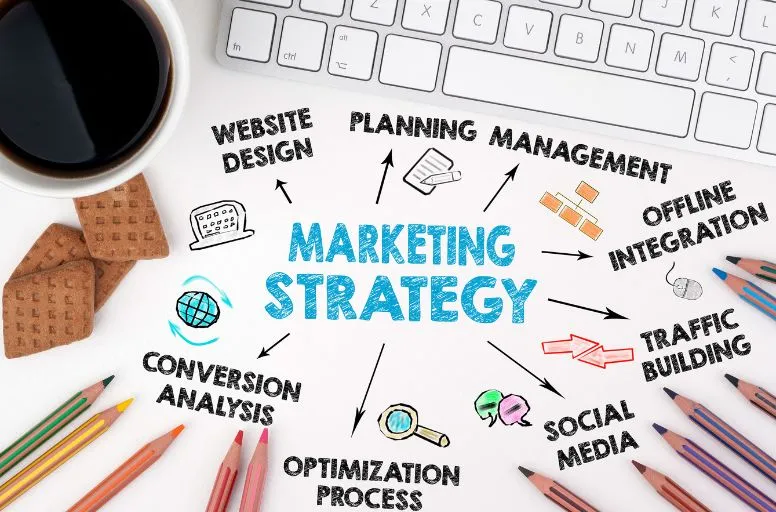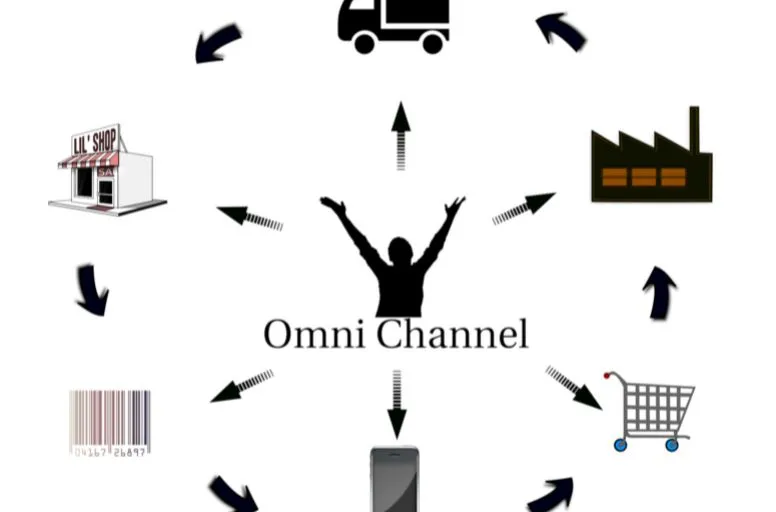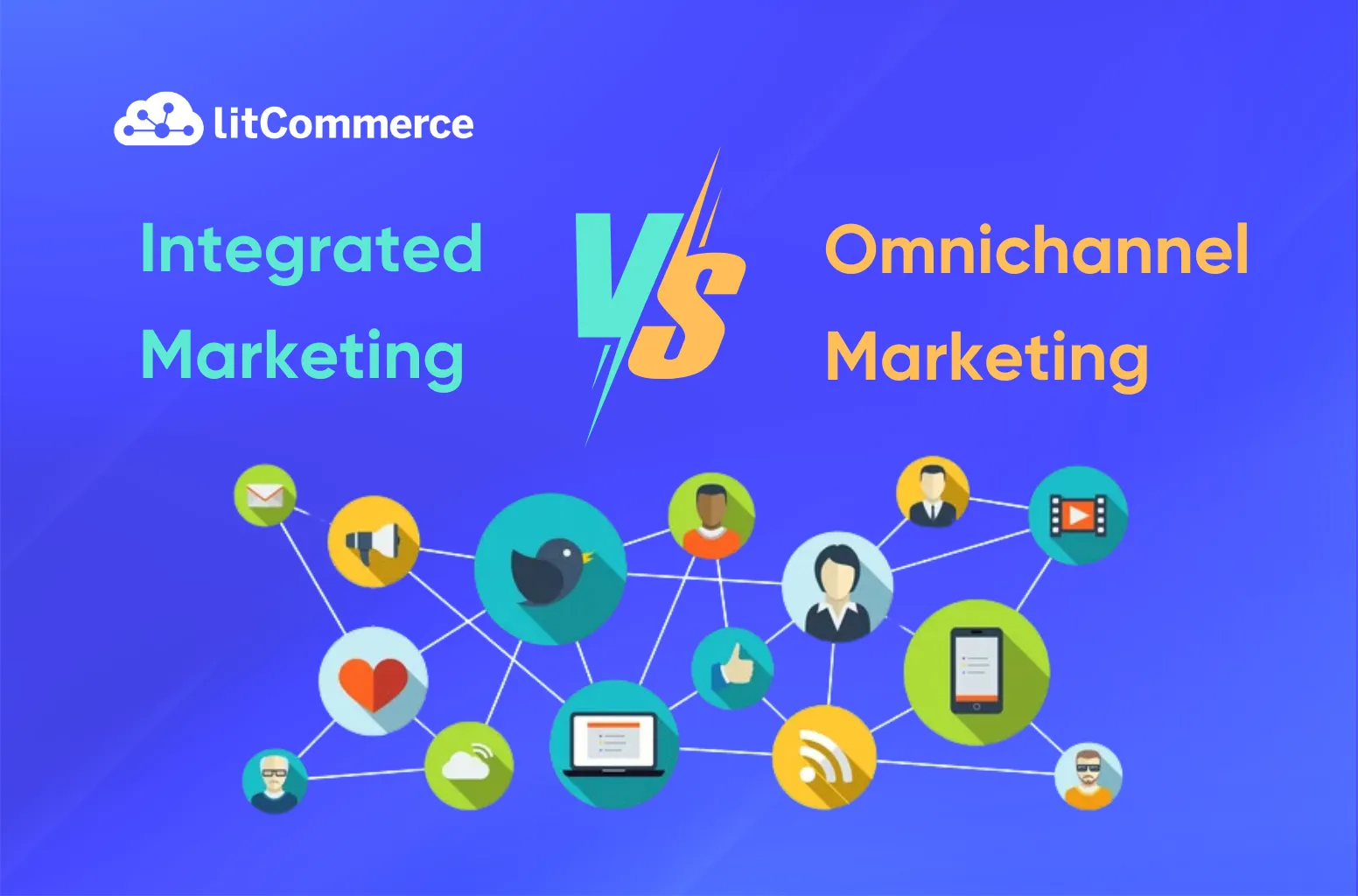Marketers now have more channels than ever to reach potential customers, which creates a challenge. It’s important to ensure that communication across these channels is unified and works together, not against each other.
Two effective strategies to boost audience engagement are integrated marketing vs omnichannel marketing. While each has its advantages, understanding their differences is key to using them successfully and improving marketing outcomes.
Then how can you decide which strategy should be used for your business? Let this guide help you to learn more about:
- An overview of integrated marketing and omnichannel marketing
- Integrated marketing vs omnichannel marketing – what’s the difference?
- How to define what marketing strategies suit your business?
Keep reading for more!
An Overview of Integrated Marketing and Omnichannel Marketing
Before digging further into the differences between integrated marketing vs omnichannel, let’s have a quick look into what these marketing strategies are.
What is integrated marketing?

Integrated marketing is a concept that includes all the ways a company promotes its products or services. It focuses on making sure the message and brand image are the same across every channel, helping to build customer trust. The integrated marketing channel includes both traditional methods like TV and print ads, as well as digital methods like social media and email.
For example, a company might run a campaign with the same core message on TV, social media, and email newsletters. Each platform reinforces the same key points and visuals, creating a cohesive brand narrative that resonates with the audience across various channels.
What is omnichannel marketing?

Omnichannel marketing is a customer-focused approach that provides a seamless experience across all digital and physical platforms. It aims at giving customers a smooth and consistent experience no matter how they shop—whether in a store, online, on their phones, or through social media. It uses customer information to create personalized experiences that work across all these different channels.
For example, a retail company that allows customers to view products online, purchase them in-store, and access post-purchase support via mobile or social media. All channels should maintain consistency in service quality and information. Omnichannel marketing ensures that each interaction complements the previous one, enhancing customer satisfaction and engagement.
Integrated Marketing vs Omnichannel Marketing – What’s the Difference?
Integrated marketing vs omnichannel marketing are both types of multichannel marketing, but they have some important differences. It’s helpful to understand these differences, as one approach may fit your small business better than the other, depending on where your business is in its growth journey.
A store that recognizes a customer’s preferences online and in-store, offering similar experiences on both
For those sellers still confuse the differences between the omnichannel and multichannel selling models. Check out this article for more.
1. Integrated marketing
Do you want to use integrated marketing for your business? Understanding the importance of integrated marketing communication and its main challenges can help you make the right decision. Here are the main pros and cons for your reference:
Pros of integrated marketing
1. Cost reduction
Running campaigns across different channels can be expensive. Integrated marketing helps cut these costs by letting you use the same materials and messages in multiple places. This approach not only keeps your content consistent and aligned with your brand on every integrated marketing channel but also saves money, time, and effort in creating new content.
2. Wide brand visibility

Since integrated marketing uses multiple channels, your brand gets exposed to a larger audience. Each channel brings its group of consumers who can see and possibly interact with your campaign. That leads to wider visibility for your brand image.
3. Consistent communication strategy
Whether your ads are online or in physical locations, they need to share the same message. If they don’t, customers may not trust your brand. This is why many companies opt for integrated marketing strategies to spread their message to more people consistently.
Additionally, as a marketer, you may be familiar with the “Rule of Seven” by Dr. Jeffrey Lant, which says that a customer needs to see your ad at least seven times before considering buying. Integrated marketing makes it easier to follow this rule by using various online platforms to extend your brand’s reach.
Cons of integrated marketing
1. Resource-intensive
Integrated marketing demands significant resources, both in terms of time and budget. Coordinating campaigns across multiple channels often require additional staff, tools, or outsourcing, which can be costly. As a result, it may be challenging for businesses with limited resources to execute integrated marketing effectively without stretching their capabilities too thin.
2. Complexity in execution

Executing an integrated marketing campaign means managing various platforms, teams, and strategies, all while maintaining consistency in messaging. The complexity of ensuring that each channel aligns with the brand’s overall communication plan can lead to errors or inconsistencies.
Miscommunication between teams or departments can further complicate this, causing delays or confusion. As a result, companies may face difficulties keeping their marketing efforts synchronized across different channels.
3. Limited personalization
While integrated marketing excels at delivering a consistent message across platforms, it can sometimes fall short in personalization. Since the focus is on unifying the brand’s communication, there may be less room to customize content to specific audiences or individual preferences. This can limit a brand’s ability to connect deeply with different customer segments.
Best for: If you haven’t connected your customer engagement channels or created a clear brand story yet, an integrated marketing strategy is ideal. It works especially well for small to medium-sized businesses looking to grow their audience while maximizing limited resources. Established brands also benefit by reinforcing their image and building trust with customers.
2. Omnichannel marketing
Compared omnichannel vs integrated marketing, omnichannel may share some pros and cons with the latter. Read on to explore:
Pros of omnichannel marketing
1. Higher customer satisfaction
Omnichannel marketing can boost customer satisfaction by making their experience smoother and more convenient. Whether they’re shopping online, in-store, or through an app, they can shop how they want, and everything feels connected.
Customers get consistent communication and personalized offers and can switch between channels without any hassle, which makes them feel valued and understood, ultimately leading to a better overall experience.
2. Improved customer lifetime value

When your marketing focuses on customer satisfaction rather than just promoting your brand, you’re more likely to create happy customers. Happy customers tend to stay loyal for a long time, especially when you jump into omnichannel eCommerce. Plus, it’s important to remember that retaining current customers is usually easier and cheaper than trying to attract new ones.
According to Adidas’ Director for Digital and Retail Marketing, customers who use multiple channels are worth about 30% more over their lifetime than those who shop through just one channel. This is because their positive, consistent experiences lead them to recommend your brand to others, helping you generate more leads in the future.
3. Revenue increase
The main goal of any marketing strategy is to boost your revenue. Omnichannel marketing can enhance this even more by focusing on the customer and maintaining consistency across platforms. According to a report, customers who interact with a brand through multiple channels spend about 4% more in physical stores and 10% more online than those who use only one channel.
Additionally, more consumers are choosing to shop across multiple platforms. That offers a great chance your products can be found and bought by potential customers if you sell on various channels.
Cons of omnichannel marketing
1. Complex implementation
Managing and integrating multiple channels can be complicated and time-consuming. Businesses need to ensure that all platforms work together seamlessly, which may require sophisticated technology and coordination among teams.
2. High costs

While omnichannel marketing strategies can drive sales, it can also be expensive to set up and maintain. Companies may need to invest in various tools, software, and training to effectively manage their channels, which can strain budgets, especially for smaller businesses.
3. Data management challenges
Collecting and analyzing customer data across multiple channels can be overwhelming. Companies must have strong data management systems in place to ensure they can effectively track customer interactions and preferences without becoming bogged down by information overload.
Best for: Compared to integrated marketing vs omnichannel marketing, omnichannel marketing is best for large companies that have the resources to manage multiple channels effectively and want to create a consistent customer experience. It’s also beneficial for small to medium-sized businesses looking to enhance customer engagement by connecting online and offline interactions, allowing them to compete with larger brands.
How to Define What Marketing Strategies Suits Your Business
Are you finding it difficult to choose between integrated marketing vs omnichannel marketing strategy for your business? Consider these key aspects to help guide your decision:
1. Your business size and resources
If you’re a small business with limited resources, you can choose integrated marketing strategies. Because it is more manageable, as it focuses on fewer channels with a consistent message. However, If you already have a solid multichannel strategy with clear messaging, you can choose omnichannel marketing.
If you’re a large business with ample resources and a diverse customer base, you can choose omnichannel marketing. Because it allows you to connect with customers on multiple platforms, creating a smooth experience that can increase loyalty and sales.
2. Your business goals
If you focus on brand awareness and recognition, you can choose integrated marketing. Because it helps ensure that your messaging is clear and consistent across different channels, making it easier for customers to remember your brand.
If you want to improve customer retention, you can choose omnichannel marketing. Because it provides a seamless experience for customers, encouraging them to return to your brand and increasing their loyalty.
3. Your product range
If you have a diverse product range, you can choose omnichannel marketing. Because it allows you to customize your approach for different customer segments across various platforms, helping you reach a wider audience effectively.
If your business operates in a highly competitive market, you can choose integrated marketing. Because it allows you to communicate a unique message clearly, making it easier for customers to choose you over others.
4. Future growth plans
If you plan to scale your business in the future, you can choose to integrate both omnichannel and integrated marketing strategies. Because starting with integrated marketing gives you a strong foundation while adding omnichannel marketing later can enhance customer engagement as you grow.
Integrated Marketing vs Omnichannel Marketing – FAQs
Marketing is the broader process of creating value and building customer relationships. It includes identifying target markets, developing products, setting prices, promoting brands, and distributing goods and services. Meanwhile, integrated marketing strategies are a more strategic approach that coordinates all marketing activities to deliver a consistent message and brand experience across all channels. Omnichannel marketing differs from traditional marketing by offering a seamless, integrated experience across multiple platforms—both online and offline. While traditional marketing focuses on individual channels like TV, print, or radio, omnichannel marketing connects all touchpoints, ensuring customers can switch between platforms without losing consistency in their experience. To create a strong integrated marketing mix, businesses need to focus on understanding their customers’ needs and preferences. Innovation is key to making products that stand out from competitors. By consistently improving and updating their offerings, businesses can stay ahead in the market and remain competitive. Omnichannel marketing strategies help businesses meet objectives by providing a seamless experience across multiple platforms, increasing customer engagement and satisfaction. It allows companies to reach customers where they prefer to shop, whether online, in-store, or through mobile. By integrating data from different channels, businesses can personalize interactions, improve customer retention, and boost sales.
It’s Time to Decide Which Marketing Strategy Fits You!
In today’s market, where customers expect smooth interactions across different channels, both integrated marketing vs omnichannel marketing are valuable strategies for businesses. Regardless of the approach chosen, companies must plan carefully, align campaigns across all channels and use technology efficiently, to reach their goals successfully.



